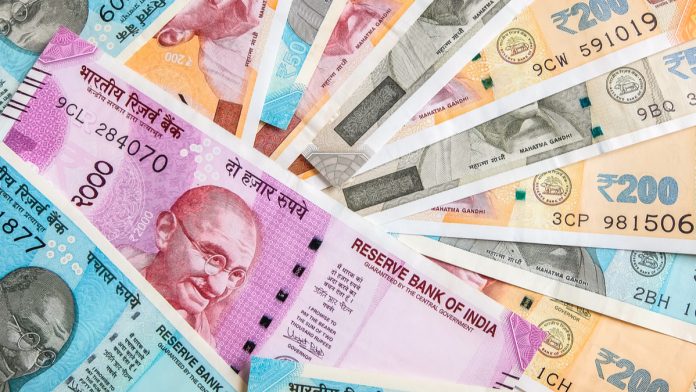- Indian Rupee (INR) falls as inflation is set to cool
- CPI is forecast to be 6.4%
- US Dollar (USD) falls versus major peers on dovish Fed bets
- US PPI data is due
The US Dollar Indian Rupee (USD/INR) exchange rate is rising on Friday for a second straight session. The pair rose +0.09% yesterday, settling at 82.28. Today, at 11:30, USD/INR trades +0.06% at 82.32, trading in a range between 82.06 to 82.35. The pair is set to gain 1.13% across the week.
Inflation in India, as measured by consumer prices, is expected to fall to a nine-month low of 6.4% in November as food prices moderated. Food prices account for almost 40% of the CPI basket.
Inflation at 6.4% will still be above the Reserve Bank of India’s 2%-6% tolerance band. Inflation has been above this tolerance band all year, fueling 225 basis points of interest rate hikes by the central bank, taking its repo rate to 6.25%.
If inflation does decline slip to 6.4% this will be where inflation was in February before the Russian invasion of Ukraine, which sent food and commodity prices surging.
The US Dollar is rising versus the Rupee but falling versus its major peers The US Dollar Index, which measures the greenback versus a basket of major currencies, trades at -0.03% at the time of writing at 104.68, extending losses from yesterday.
The US dollar it’s falling as investors bet that the Federal Reserve will slow the pace of interest rate times going forward. US initial jobless claims showed that the number of Americans claiming unemployment benefits for the first time rose again to 230k, up from 225k in the previous week. Continuing jobless claims raised to the highest level in 10 months, showing those Americans who had lost their jobs we’re finding it hard to find a new one. This suggests that the US labour market is cooling.
Attention is now turning to US wholesale inflation data as measured by PPI. the PPI is expected to cool in November two 7.4% YoY, down from 8% YoY in October. Cooling inflation would further support the view that the Fed will slow the pace of rate hikes.




